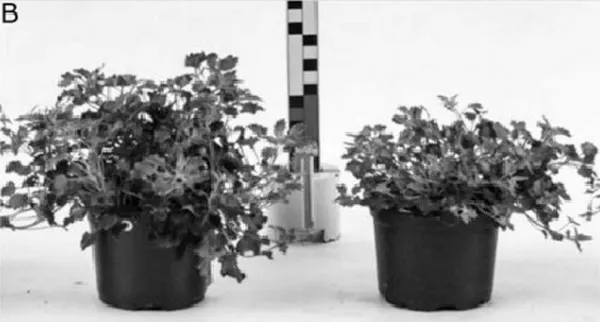Mechanical stimulation to produce stable and high-quality crops under greenhouse conditions is a promising alternative to chemical growth retardants. However, plant tissue damage and the lack of full automatization have been major constraints for large-scale applications. This study demonstrates the potential of automated, touch-less, directed air stream application systems to control the plant height and appearance of bellflower ( Campanula ‘Merrybell’), creeping inchplant ( Callisia repens ), and tomato ( Solanum lycopersicum ‘Romello’).
Plant appearance of bellflower at 2 weeks and 10 weeks after air stream initiation with the air pressure module and untreated control plants at the State Horticulture College and Research Institute. (Photo credit: ResearchGate)
Plants were cultivated under greenhouse conditions and exposed to regulated air stream stimuli by three different prototype systems. Air stream stimuli of all three prototype systems significantly reduced the plant height of all three plant species. Bellflower plants showed a reduction of 24% and tomato plants showed reductions of 26% to 36% compared with the respective control plants. The degree of height growth inhibition in tomato was shown to be predominantly influenced by the stimulus intensity. An air pressure prototype system was successfully implemented in a horticultural company and the height of creeping inchplant could be sufficiently reduced by 20%, on average, throughout 1 year of the experiment compared with untreated controls. Overall, no plant tissue damage of plants treated with the air stream was visible, and no difference in the number of flowers of the bellflower plants treated with the air stream and of the untreated controls was observed.
This study was conducted by Marc-Andre Sparke, Achim Wegscheider, Patrick Winterhagen, Ute Ruttensperger, Martin
Hegele and Jens Norbert Wunsche.
To read the complete study, go to www.researchgate.net.
Sign up for our daily Newsletter and stay up to date with all the latest news!
Subscribe I am already a subscriber